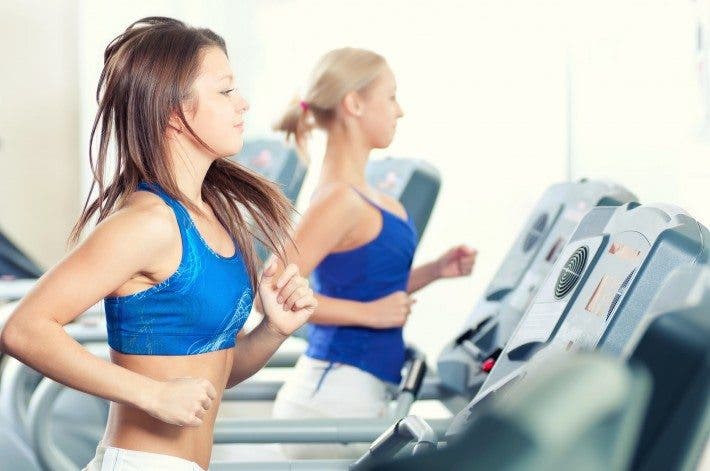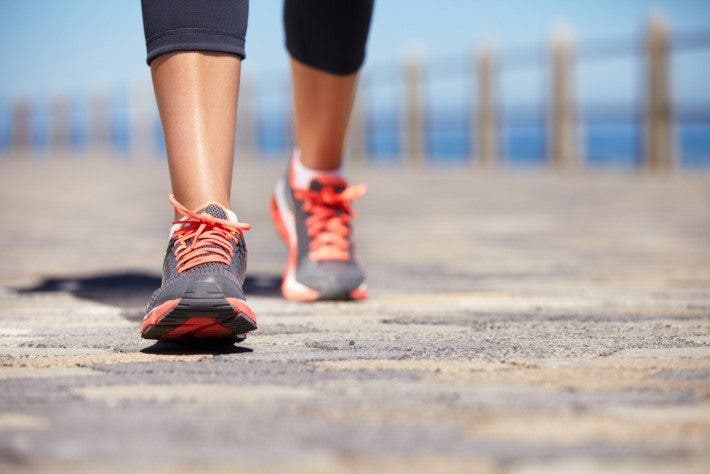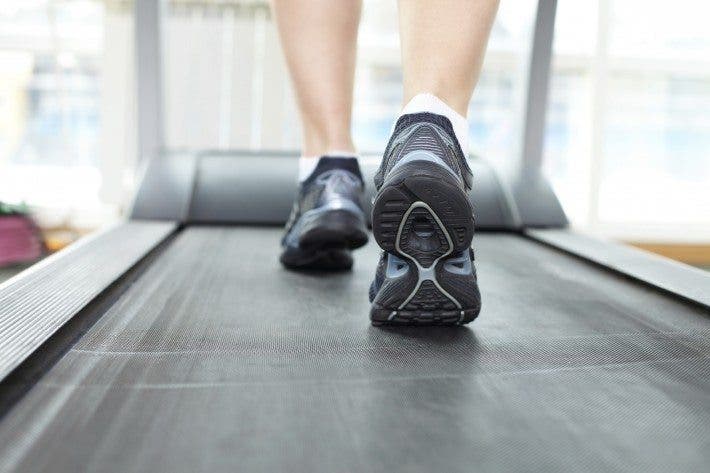In recent years, running has become very popular among people since it is an excellent sport to burn calories or maintain our weight (Williams, 2013). In addition, it is an activity that has many benefits for our health and helps us to be in a better mood (DiLorenzo et al., 1999).
However, there are many people who, for health reasons or because they are not in adequate form at that time, prefer to walk instead of running. The good news is that walking can also be an excellent activity for our health (Williams & Thompson, 2013).
Differences between walking and running
Walking and running can give us the same health benefits, although running is the best option to lose a few kilograms (Williams and Thompson, 2013; Williams, 2013), since between 2 and 2.5 times more energy are used in comparison with walking, regardless of whether we do it on asphalt or on the treadmill (Hall, Figueroa, Fernhall & Kanaley, 2004). The amount of energy we use will depend on several factors such as the pace at which we run or our body weight.

It is also interesting to see that in the face of the same amount of calories expended (that is, walking for longer to equal the energy expended by runners), running also provides more advantages for losing weight and keeping BMI within acceptable levels (Williams , 2013), since running could better regulate hormones related to appetite (Larson-Meyer et al., 2012). That is, after running we will probably be less hungry than if we had walked.
Brisk walks are also healthier than walking a greater distance more slowly. However, walking is an excellent option for people who are starting to do sports and thanks to this activity we can obtain equally good benefits for our health, such as reducing the risk of having cholesterol, preventing hypertension and diabetes and having a better cardiovascular condition (Williams and Thompson, 2013). Moreover, spending only about 1000 calories during the week walking could be enough to get benefits for our health (Haennel and Lemire, 2002).
Therefore, although running is more effective to lose weight, walking can be a good option in the long term since it does not stress our body as much and reduces the risk of suffering muscle injuries or joint damage.

How to start walking?
Once we have decided to start playing sports, we must know if we are ready to run. To do this, it is enough to know whether or not we can talk to a partner during the activity. If not, we must lower the demand for exercise.
A good idea if we have just started in the sport is to combine both activities and progress by reducing the walking times and increasing the running times. Once we see that we are able to endure 30 minutes running, we must set ourselves the challenge of doing it at about 7-9 km / h, since at that speed the body will begin to expend more calories as it is not used to so much oxygen demand (Vincent and Vincent, 2012). When we are able to do it for 1 hour, we can consider increasing the speed.

In the event that we cannot run, walking with light weights on the hands and ankles can be an intermediate step before starting to run. For example, walking at 6.5 km / h with weights is comparable to running at 5 km / h without weight (Miller and Stamford, 1987). Likewise, walking on an incline is another good alternative, especially if we have joint pain. To do this, it is advisable to gradually increase the incline of the treadmill 1 degree every 2 weeks, up to a maximum of 6 degrees (Vincent and Vincent, 2012).
To have positive effects on our body, 3 sessions a week should be enough, preventing them from being followed, to allow muscle tissue to regenerate between workouts.
Injury prevention
Our main objective must be to enjoy sports and avoid injuries. It is expected that any of us will have stiffness if we have recently started training. However, if we see that we have joint pain 24 hours after exercising, it is because we should lower the intensity of our workouts.

To prevent injuries, the most important thing is to gradually increase the difficulty of the exercise , especially if up to that moment we have been sedentary, and do a good warm-up before it, such as exercises that allow us to gain strength in the muscles of the foot, stability in the knee and strength in the lumbar and abdominal area.
By following these tips, we will be able to play sports and follow a healthy lifestyle for many years.
References
- Goldie, K. (2014). Is Walking as Good a Workout as Running?
- DiLorenzo, TM, Bargman, EP, Stucky-Ropp, R., Brassington, GS, Frensch, PA and LaFontaine, T. (1999). Long-term effects of aerobic exercise on psychological outcomes. Preventive Medicines, 28 (1), 75-85.
- Haennel, R. and Lemire, F. (2002). Physical activity to prevent cardiovascular disease: How much is enough? Canadian Family Physician, 48, 65-71.
- Hall, C., Figueroa, A., Fernhall, B. and Kanaley, JA (2004). Energy expenditure of walking and running: comparison with prediction equations. Medicine and Science in Sports and Exercise, 36 (12), 2128-2134.
- Larson-Meyer, DE, Palm, S., Bansal, A., Austin, KJ, Hart, AM and Alexander, BM (2012). Influence of Running and Walking on Hormonal Regulators of Appetite in Women. Journal of Obesity . doi: 10.1155 / 2012/730409.
- Miller, JF, and Stamford, BA (1987). Intensity and energy cost of weighted walking vs. running for men and women. Journal of Applied Physiology, 62 (4), 1497-1501.
- Vincent, HK and Vincent, KR (2013). Considerations for Initiating and Progressing Running Programs in Obese Individuals. American Academy of Physical Medicine and Rehabilitation, 513-519.
- Williams, PT (2013). Greater weight loss from running than walking during a 6.2-yr prospective follow-up. Medicine and Science in Sports and Exercise, 45 (4), 706-713.
- Williams, PT and Thompson, PD (2013). Walking versus running for hypertension, cholesterol, and diabetes mellitus risk reduction. Arteriosclerosis, thrombosis, and vascular biology, 33 (5), 1085-1091.